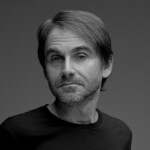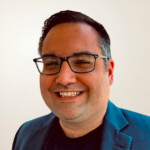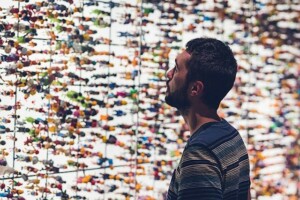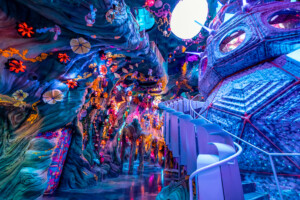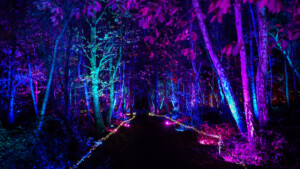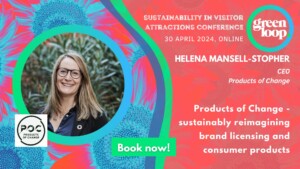The first phase of Meraas Holdings’ much-anticipated Dubai Parks and Resorts themed entertainment offering is expected to open next month.
Featuring three theme parks – Motiongate Dubai, Bollywood Parks Dubai, and LEGOLAND Dubai – the development will further consolidate the emirate’s position as a compelling global destination.
 The responsibility for steering this mammoth concept safely to completion fell to DPR’s Chief Technical Officer, Matt Priddy.
The responsibility for steering this mammoth concept safely to completion fell to DPR’s Chief Technical Officer, Matt Priddy.
Blooloop spoke to Priddy, DPR’s Director of Creative, Arte Contreras and Alec Calle, CEO of Entertainment Design Corporation (EDC). EDCA was retained by Dubai Parks and Resorts to provide design and overall narrative input on Motiongate and Bollywood.
Between them, they described the one goal, transparent business model that put the design firm at the heart of the process and ensured the project was delivered on track and on time.
Phase 1 of Dubai Parks and Resorts

Contreras outlines the scope of the project:
“Dubai Parks and Resorts is developing a destination resort that will include three theme parks, one large Retail, Dining and Entertainment (RD&E) area and a themed five-star hotel. Each park is individually themed. Legoland is a typical Legoland park, and offers more experiences that are designed to reflect the renowned architectural skyscrapers of Dubai. Bollywood is designed to represent the Bollywood film industry and Indian culture, and is a first of its kind.
Motiongate, designed to represent Hollywood movie-making, showcases the intellectual properties of Dreamworks, Sony, Lionsgate and Smurfs. The RD&E area connects all three parks and is themed as a walk through time; beginning with medieval France, through the Industrial Revolution, and finally into a modern architectural style, also connecting to Marriott’s Polynesian themed Lapita Hotel.
“Simultaneously, this global resort project is integrated into the overall Dubai infrastructure and as such, roads and highways had to be created for guest access from Sheikh Zayed Road (the main highway through Dubai) including bridges and overpasses.”
Together, this constitutes Phase One. Contreras is currently overseeing the design of Phase Two, scheduled to open in Autumn 2019. A Six Flags theme park is also in the pipeline.
.jpg)
Putting down the Pencils
As Director of Creative, Contreras’s role is a weighty one. First off, he’s responsible for hiring the creative team, including outside design and fabrication firms. Then, there’s the whole business of concept design, show treatments & scripts, storyboards, ride designs, area development, graphics, architecture in coordination with the studios for IP development, the schematic design and detail design….the list goes on. And on. Not to mention supervising all work being done by global vendors to build the above, and overseeing installation while maintaining intellectual property integrity, budget and schedule.
“The creative process never stops, ” he says. “However, at some point the pencils must be put down. Then it’s time to build in order to meet the schedule.”
The design process, he says, has remained largely constant throughout the 25 years he has been in the business.
“Whether working at Disney Imagineering, Disneyland, Universal Studios, Paramount, Warner Bros., the design process (including transparency, communication and shared objectives) has been the same.
“The completion of Phase One will be the eighth Theme Park that I have helped design.”
[vsw id=”bzmrPuFwpXI” source=”youtube” width=”425″ height=”344″ autoplay=”no”]
Sharing Objectives
Where the process itself is concerned, he clearly knows what does – and doesn’t – work.
“Unless the design team collaborates with the intellectual property owners closely and shares that information with all integral parties, and unless they share objectives through communication while maintaining design integrity, nothing gets done.
“The greatest challenge with this project was to take an incomplete conceptual package and fast track it into SD & DD to maintain the aggressive schedule. The concept phase took longer than expected. Also, the intellectual property (IP) owners were not necessarily integrated into the design approval process.
We immediately made the necessary changes to effectively collaborate and involve key IP stake holders to ensure successful approvals of all designs. I called upon the expertise of EDC, and BOSA to help with this endeavour. Collectively, we finished the schematic design for phase one in record time and involved the creative personal from the respective studios to achieve greater success.”
.jpg)
The next challenge was to hire experienced theme park designers and artisans willing to relocate to Dubai for a few years.
“As always, the eternal struggle is between creative and project management in dealing with quality verses budget and schedule. But, in navigating these challenging waters, Matt has been a tremendous support and mentor given his expertise and experience in the industry.”

Entertainment Design Corporation (EDC)
It was to facilitate the second and third stages of a three-phase process that EDC and DPR evolved a much more direct and transparent business/creative model. For Alex Calle, this model was a refreshing move away from the multi-agenda protocol that had prevailed since developers began using external partners in the creation of themed entertainment.
“What’s been happening over the last ten years as different developers are getting into the themed entertainment business, they are turning to the holders of the IP around which the shows or park will be built, ” he says.
“The developers hire a design firm, and the design firm is now caught between two bosses. A servant with two masters, answering to the IP on creative issues. And at the same time trying to get stuff approved budget-wise through the developer.
“It doesn’t facilitate the IP at all. The design firm is now looking after their bottom line and protecting their interests, which doesn’t help the client- the developer. Delayed payments transfer into delayed deliverables from the design firm, and we’re just burning time.
“So the best way to proceed, for everyone’s sake, is to bring us [the design firm] in, make us a creative entity and empower us with the best way to move forwards.”
.jpg)
Day-by-Day Reviews
This much more agile process allows for information sharing and day-by-day review. It therefore eliminates schedule-eating variation orders, maintains cost control and speeds up the design schedule.
“So, what we would do is identify tasks, whether it was redesigning a queue line, redesigning a portion of the area development, increasing capacity in a ride or re-writing a script. We would predict the amount of time the task would take, and just tackle it with the IP, ” explains Calle.
“Immediately the conversation with the IP became: ‘we’re on the same side of the table, my interests are in line with yours, I want to get this completed as fast as possible to make our client happy, but at the same time I’m here to answer any of your questions’.
.jpg)
Streamlining the Creative Process
“In that way we were able to streamline the creative process, probably tenfold. We were able to deliver the Shrek dark ride from ground level 0 through schematic design. Delivery was in about three and a half months, with full approval.”
“We had an incredible, talented team. Everybody was on the same side of the table fighting the same demon, which is time. It proved to be a very collaborative process.
“We sat down with Jeffry Katzenburg and sketched ideas together. Then we turned to the producers and worked out the fart jokes in the ride. There was no tension in the room around how payment was structured. Nor was there ‘should I turn this deliverable in because then I’ll have no leverage on my client?’
“All those commercial issues just weren’t there. It let us focus on what we want to do in life, which is be creative.”
[vsw id=”zXs1zZdx28U” source=”youtube” width=”425″ height=”344″ autoplay=”no”]
Transparency is Key
Calle grew up in the theatre, realising, aged about eleven, that he didn’t want simply to be an actor.
“I remember sitting in the audience one night. It dawned on me that there were other people that create theatre. There’s the director, and then there’s somebody that controls the lights. There’s a person that actually designs that thing that’s onstage. Somebody’s got that job? Somebody tells a story that way?
“It was a huge moment – how do you tell stories with light? And, there’s a director. That’s a huge epiphany for a kid. There’s a whole world and team of people that are collectively telling a story, and that’s incredible.”
That storytelling aesthetic is the creative force behind EDC. Calle has structured EDC as a transparent company, believing creativity can’t thrive in murky waters. Transparency certainly proved crucial as DPR, EDC and DreamWorks collaborated on the project.

Focus on Quality and Deadline
“How could I sit across the table from the people at Dreamworks and not share the script ideas that we came up with that morning because we’re scared we’re not going to get paid next month? That seems so absurd to us. And, it was so liberating to be that free – we didn’t have to hold back anything.”
In the past, Calle believes the holdup for the client has been a feeling that the design firm’s interest is in taking as long as possible.
“I think the difference is that when you have a design firm that is both focused on the quality of their work and on the deadline as well, the interests all of a sudden align, and you’re not at odds anymore.”
Despite the more streamlined process, the project was not without its challenges.
Identifying the Task
“On the project management side, identifying tasks so they could be validated was something that was an interesting hurdle. When you first go about designing something, a dark ride, for example, everybody’s very accustomed to saying ‘concepts’ and ‘schematics’ and ‘design development’: phases that are set up because they’re always against a payment structure.
“But, in a different kind of model, how do you identify a task?
“Is writing a script a task? Or, do I first need to do the outline? So, taking the very esoteric concept of writing a script and then breaking it down into practical, pragmatic, production-manager-esque ease is the challenge. Because, it’s very hard to tell your writer, ‘you’ve got three days to write a script’, and then also get it approved. That was a creative hurdle. We overcame it by making it all of our collective issue. ‘Here’s where we are, here’s the amount of time we think we’re going to use. So how do we collectively break it down so that Samsung, our project manager, can track it easily enough?’
“On the creative side, the hurdle was sheer time.”
.jpg)
Creating the ‘How to Train Your Dragon’ Ride
To illustrate his point, he describes the creation of the Motiongate ‘How to Train Your Dragon’ ride:
“We had a coaster path that had already been locked-in, because of the timeframe and the time needed to build it, ” explains Calle.
“We had a box that had already been engineered and designed, we had a path based on an old concept that had been put into that facility, and now we had to create a new concept, based on those two elements. It was an awesome challenge.”
There were certain elements of the story that needed to be shown during a slow section of the ride. As the track was already an absolute, this imposed potentially untenable restrictions.
“At first, we thought it would be a hell of a battle, and too limiting; how could we tell a story with the beats already laid out for us? But, it turned out to be a lot easier than we’d first imagined. We started scripting as if we didn’t know what the limitations were; we just did a brain dump.
“And amazingly, the beats were aligned roughly where they needed to be. Just because of how the world tells stories. There is a beginning, a middle and and end. Then you’ve got the hero, and the moment the hero comes upon his or her mission in life. In the creative world, we’re always thinking that there are infinite possibilities. But in fact there are, what, twelve stories in the world? So, whether it was fortuitous or not, we happened upon the two stories that lined up formulaically.”
(1).jpg)
Nothing Should Impede the Guest Experience
Calle believes the end result proves the success of the IP/developer/design firm model and hopes it becomes the new norm in the future.
“Anything to impede the guest experience shouldn’t be there, and it’s vital we work as a team to get rid of it. I think we did that really well on this project.
“We’ve really found a structure that both services everyone, and gets rid of everything that shouldn’t be in a project, the stuff that holds back the creative.”

For Matt Priddy, the former Disney Imagineer responsible for orchestrating the project, it was not a new implementation model. Rather, he says:
“It’s how you implement it vs how you structure your business from your creative partner’s standpoint. Talking with Alex, I think he would say that that, from a theme park standpoint, may be the way to move forward with clients in the future.
Given the right project and the right budget and schedule, it’s a terrific business model for those creative partners. This is because it allows them to be properly staffed, in terms of the number of resources as well.”
“I think, for EDC, that business model evolved a little for them. And while I don’t think in the past they’d been exposed to some of the things we came up with, that’s fine: they responded. They’ve got the people, the talent, the software, and they went for it. And, they did a good job. And, without that, we would probably be in a very different position.”

Real Time Coordination – The Six Flags Approach
Next time round, while he may adopt the same business model, the timing would, he says, be different.
“We would bring partners in early and work very closely with them on a weekly basis.
“Hopefully they’re in Dubai, but that doesn’t happen very often. On the facility side, the way we’re doing Six Flags is a technique that we’ve used in the past. This is where you bring in the architect, the engineer and the creative people. You stick them in a big room, and that’s where they work. Right next to you.
“So, the coordination is in real time. Then at some point you bring in a contractor. He gets into that room as well, and he’s doing his working drawing, validating those things against everything else.
“It really cuts down on the time for design, ” says Priddy. “You can shortcut some things, because you’ve already got your team. You don’t need to have completely produced a package to go out to your contractor with, because he’s been part of that process for the majority of the time.”
.jpg)
Design Software Opportunities
Having spent 21 years with Disney Imagineering, Priddy is very familiar with the Disney model. He points out that outside that system, the use of external partners has been around for a while. It is to companies like EDC that developers turn, usually for master planning or concept work.
“But, it depends on what you buy. If you buy just the master planning services, or design intent, as opposed to detailed design, those are very different things. And, there are a few external partners that can take it to the detailed or schematic design level, and you can then give those designs to an architect or show set design company.
“Or, you can do what we did, taking the design intent from the primary creative partner, and, where they’ve designed it on Revit (Autodesk Revit commercial 3D modelling software), or CAD (AutoCad commercial computer assisted design software), through the use of various different programmes, you can convert that to a Maya (Autodesk Maya commercial 3D design software) model, which then you can convert back to CAD drawings that are dimensional and scalable.
“This means you can work directly with the architect or engineer to make sure your show stuff, scenery, angles etc, work with the limitations of the specific physical building.”
.jpg)
Building Information Modelling (BIM)
Something relatively new to the theme park industry is BIM (building information modelling).
“It’s very important. Your basic theme park attraction has a ride system, scenery, projections, effect, animation andlighting. Unlike Disney where we were able to do the whole thing in house and set it up, these technologies will shake hands for the first time. The BIM approach allows you to work collaboratively around the world, working on the same model. You can determine where you have intrusions into the ride, you can determine where you’re going to have a catwalk or a column or a piece of scenery.
“So, you can take all these elements and put them together in the BIM model. You can move them around in a collaborative way and see how they fit. It’s pretty compact and very complex. So the use of those collaborative tools, as well as the ability to do colour, texture, dimensions in Maya, really has changed a lot.”
(1).jpg)
The Creative Room
Applying this to the DPR project, he explains:
“We hired a company called Riva Creative. They worked with us and our IP partners to develop the designs for both Bollywood and Motiongate, which comprised Sony, Dreamworks and Smurfs at the time. They did design intent for Motiongate and detailed design, which involves more detailed drawings and actual dimensions, for Bollywood. Design intent could be anything from a Google screenshot of what we intend it to look like. So, in that case, we had to go to a next step because while we knew how we wanted it to look, we needed to figure out how to do it.”
“And, that’s where we employed EDC, ” says Priddy. “In the meantime, we at DPR formed our own creative room – a group consisting of 10 odd people with different skillsets. Then, we started going through the packages, seeing things that needed to be enhanced or further developed, or changed if we’d changed our minds.
[vsw id=”WOCYuIMbVIk” source=”youtube” width=”425″ height=”344″ autoplay=”no”]
Give and Take
“We hired EDC, as we were very familiar with Alex and Jeremy (Railton, EDC’s founder and President) having known them for years.”
Priddy put EDC together with a company called BOSA, which had been working on media pre-visualisation. Consequently, the two companies worked closely with DPR’s design team to develop the design.
“It ended up working, ” says Priddy, “But, it was one of those things where you had to invent the whole way. We did it on a critical path because we had a schedule on a budget. Ideally, you wouldn’t want to do it like that.”
The other specialists in the process at this point are the architect and the structural engineer.
Conducting the Orchestra
“All those entities need to be in pretty good shape because you want to have the envelope from the architect, and to be able to say, ‘based on our concept design sketch, you need to move this catwalk, column, etc’. It’s a give and take thing, and they come out the end with an attraction design that’s integrated both structurally and architecturally.
“We were in such a fast track mode for DPR that we had to make changes to that process on the fly, and, fortunately, we had a lot of knowledgeable people who were able to say, ‘here’s the information we need.’
“It was 12 months of daily working things out. The creative guys and me were conducting the orchestra. We decided, ‘this problem we need to have solved by EDC’, or ‘this problem we need to be solved by both of them’.”
“It was actually a pretty cool machine, ” he says. “As a public company, we have governance issues that we have to go through, contracting procedures and policies. So, we had the corporate bureaucracy wanting to help, and they became part of the partnership as well. They understand now, though they didn’t then, about what it’s like to buy shows and rides. They were, throughout the process, awesome at negotiating with general contractors and doing facility work. If you were building a high rise building, you wouldn’t find a better bunch of contract people. But, we’re building a theme park. So some of the terms and conditions you might use with a major international contractor are different from what you would use with BOSA, for example, or EDC, where five people are in a little room in Hollywood.
[vsw id=”dDpM4gfnsk4″ source=”youtube” width=”425″ height=”344″ autoplay=”no”]
Formula for Success
“It’s difficult to quantify creative work. We used to say in Disney, ‘You can’t schedule inspiration, but you can have inspirational schedules’. And, that’s totally true, so the creative process has to be given a little room.”
Had it not been for the professionalism and knowledge of the partners, Priddy says, the job wouldn’t have got done. He likens his role to a casting director: “You sit back and say ‘this job needs these people’ etc.
“We’ve got 15 thousand workers on sight, right now. And, that’s a huge orchestra to conduct, ” he adds. “I am extraordinarily proud of what my group, working with our creative partners, has achieved.”
Images courtesy Dubai Parks and Resorts, and EDC.




